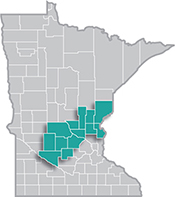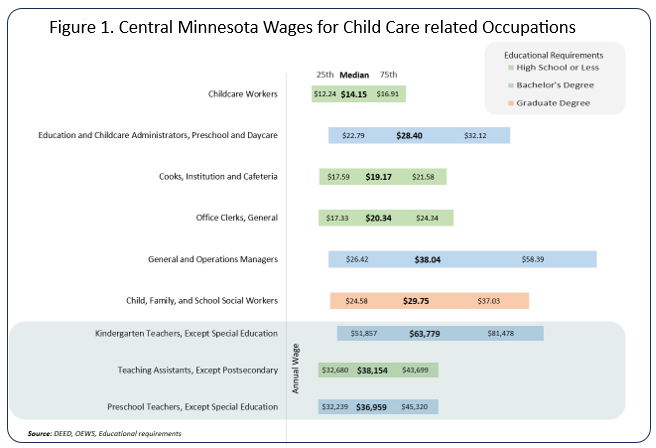 Central Minnesota is a manufacturing stronghold, with several global manufacturing firms operating there.
Central Minnesota is a manufacturing stronghold, with several global manufacturing firms operating there.
The region is especially well known for its expertise in food processing, printing, furniture manufacturing, appliances, machinery and heavy equipment manufacturing.
View our latest blogs on CareerForce. Want the freshest data delivered by email? Subscribe to our regional newsletters.
1/26/2024 9:00:00 AM
Luke Greiner
Child care careers in Minnesota play a crucial role in shaping the early development of children and supporting working families. However, like many other regions, the state faces unique challenges in the Child Care sector that impact both providers and families.
One of the significant challenges in Minnesota is the shortage of qualified child care professionals. The demand for child care services often outstrips the availability of trained caregivers, making it challenging for parents to secure reliable and high-quality care for their children. This shortage has been exacerbated by factors such as low wages for child care workers and the cost of obtaining the necessary certifications and education.
While child care workers are in high demand in Central Minnesota, employment projections actually show a decline in jobs through 2030 by 2.6%. The projected decline isn't necessarily a reflection of demand, in fact it's likely that demand for child care workers will continue for the foreseeable future; it's more a reflection of the challenge for the industry to grow.
In addition to the shortage of caregivers, the cost of child care in Minnesota is a major concern for many families. The expenses associated with quality child care can be a significant financial burden, leading some parents to struggle with balancing work and family responsibilities. Addressing the affordability of child care is crucial for ensuring that all families, regardless of their socio-economic status, have access to quality early childhood care and education.
Child care providers also face regulatory challenges. While regulations are essential for ensuring the safety and well-being of children, some providers argue that the existing regulatory framework can be burdensome and may contribute to the shortage of child care options. Striking a balance between necessary regulations and fostering a supportive environment for child care businesses is a delicate task that requires ongoing attention to attract and retain providers.
Despite these challenges, child care professionals in Minnesota are passionate about their work and dedicated to providing a nurturing and stimulating environment for the children under their care. According to staffing patterns, employment in Child Day Care is relatively concentrated with 62% of jobs filled by either Preschool Teachers or Child Care Workers.
Preschool Teachers account for a third of employment in Child Day Care Services, followed by Child Care Workers (29% of employment). The cost to obtain the necessary bachelor's degree to become a licensed preschool teacher may not be financially feasible in light of the relatively low wage potential compared to the similar Kindergarten Teachers. Both teachers work with young children, both require a bachelor's degree, but the median annual wage for Preschool Teachers is just $37,000 compared to nearly $64,000 for Kindergarten Teachers. In many cases the incentive to pursue a career as a Preschool Teacher will be outweighed by the earnings potential of becoming a Kindergarten Teacher.
A similar case exists for Child Care Workers where they can explore other in-demand careers that provide higher wages.

In conclusion, child care careers are vital for the development of the state's youngest residents and the state's workforce. While challenges exist, efforts to address workforce shortages, improve affordability, and streamline regulations can contribute to a more robust and accessible child care system for all families.
Contact Luke Greiner, Labor Market Analyst, at luke.greiner@state.mn.us